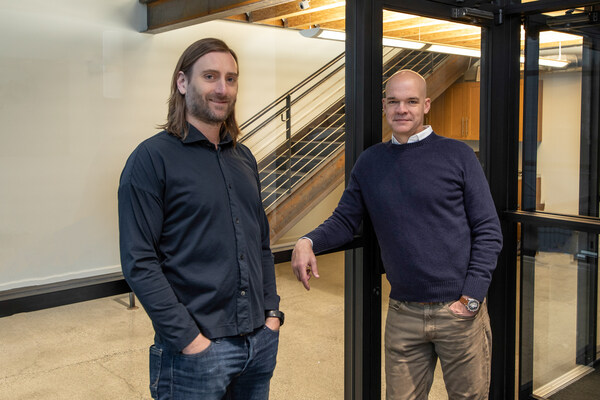Insider Brief
- New Mexico risks losing its competitive edge in the space economy unless it prioritizes investment and policy alignment, a New Mexico space advocate argues.
- He warns that space is becoming a $1.8 trillion industry affecting biotech, cybersecurity, and agriculture, yet state leaders still treat it as a niche sector.
- While other states aggressively invest in space infrastructure, New Mexico remains mired in bureaucratic delays, underutilizing assets like Spaceport America.
New Mexico’s leadership in the space economy is slipping, and failure to act now could leave the state watching from the sidelines, Bryce Kennedy, executive director of The SpaceValley Foundation, argues in an op-ed for the Albuquerque Journal.
Kennedy warns that space is no longer just an industry of government agencies and billionaires—it is rapidly becoming a massive economic driver that will reshape industries from biotech to cybersecurity. By 2035, he writes, space is projected to become a $1.8 trillion market, creating unprecedented opportunities across sectors.
“The question isn’t whether this transformation is coming. It’s whether we’ll be leading it or watching from the sidelines as our economic future slips away,” Kennedy writes.

New Mexico, home to historic scientific advancements in space and aerospace, is uniquely positioned to lead, but Kennedy argues the state is failing to capitalize on its advantages. He cites states with little historical connection to space, such as Maine and North Dakota, that are aggressively investing in the sector.
“They’re not just competing; they’re positioning themselves for dominance,” he writes in the Journal.
Space as a New Economic Engine
Kennedy argues that space is often misunderstood as a niche industry rather than what he calls “the first, truly infinite domain of commerce.” He highlights microgravity research, which is unlocking new medicines and agricultural breakthroughs, and hypersonic technology, which could transform global trade. Meanwhile, satellites are increasingly vital for cybersecurity, climate monitoring, and disaster response.
Yet despite these opportunities, Kennedy says New Mexico’s leaders continue to treat space as a narrow sector instead of a broad economic driver. He points to companies like RS21, a data analytics firm, and mPower Technology, a solar panel company, as examples of New Mexico-based businesses that have successfully expanded into the space sector. He also notes that citizen science initiatives and cultural institutions, such as STEMArts Lab and Chaco Canyon’s night sky programs, are connecting local communities to the space industry.
Kennedy contends that space is not just for aerospace firms.
“Every industry—from green energy to quantum computing—has a stake in this new domain. And yet, many of our leaders view space as a singular industry run by DOD, billionaires, and NASA. That mindset is outdated, and, frankly, dangerous,” he writes.
Missed Opportunities and Bureaucratic Paralysis
Despite its rich history in aerospace innovation, Kennedy argues that New Mexico’s reluctance to make space a top priority puts it at risk of losing its competitive advantage. While Texas has invested nearly $500 million into its space economy in the past 18 months, New Mexico remains stuck debating its 20-year-old, $220 million investment in Spaceport America.
“At this rate, [other states] may actually overtake us,” Kennedy writes.
The spaceport, he notes, has significant untapped potential due to its commercial launch capabilities, restricted airspace, and proximity to major research institutions. However, Kennedy argues that bureaucracy and underfunding have hindered its ability to serve as a commercial hub.
Meanwhile, states with fewer aerospace resources than New Mexico are making aggressive moves. Maine has carved out a niche in small rocket launches through its Brunswick Landing tech hub, while North Dakota has invested in space infrastructure and satellite communications through its Grand Sky aviation park.
“They’re proving that you don’t need a massive aerospace legacy to make a mark in the industry,” Kennedy writes.
Time For Action
Kennedy urges state leaders to take immediate action, warning that the cost of inaction will be measured not just in lost economic potential but in jobs, innovation, and New Mexico’s ability to shape the 21st-century economy. He calls for increased investment in space infrastructure, incentives for cross-industry collaboration, and a shift in mindset to recognize space as a core economic pillar.
“We need investment in space infrastructure, incentives for cross-industry collaboration, and a clear message: space isn’t just for rockets,” Kennedy writes, in the Journal. “It’s for farmers optimizing crops with satellite data. It’s for cybersecurity firms protecting operations. It’s for biotech companies discovering the next medical breakthroughs. And much, much more.”
New Mexico’s future, Kennedy argues, depends on whether it embraces bold leadership in the space sector or allows complacency to leave it behind.
“History will remember the decisions we make now,” he writes. “And the difference between failure and success is timid complacency or bold leadership. The only critical question is, which one will we choose?”
Share this article:










